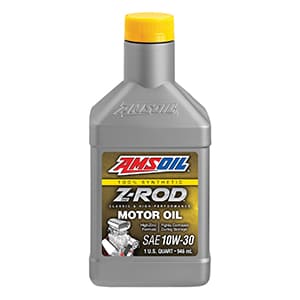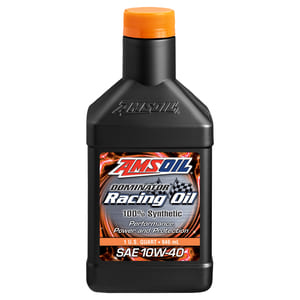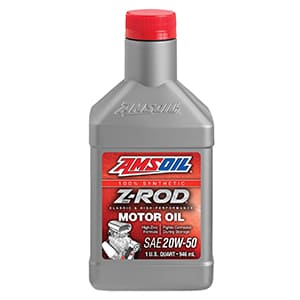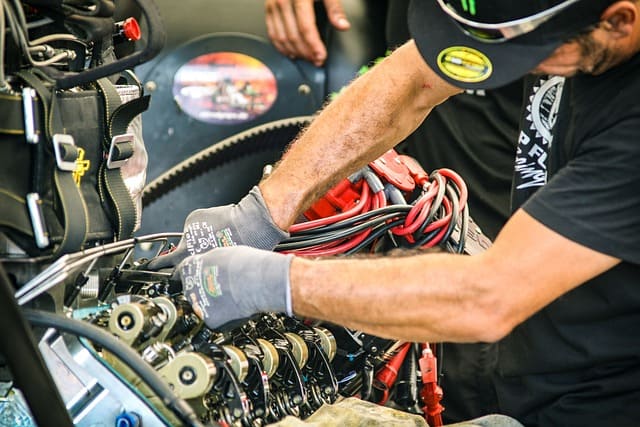Imagine meticulously building a high-performance engine only to see it fail prematurely due to improper lubrication. An engine assembly lube plays a critical role in the initial phases of engine operation, preventing wear and damage. This guide provides an exhaustive overview of why engine assembly lube is indispensable, how to apply it correctly, and the supplementary role of breaking oil.

The Importance of Assembly Lube
Engine assembly lube, often called simply assembly lube, is a specialized lubricant applied to engine components during the assembly process. Its primary purpose is to provide initial lubrication before the engine’s oil pump can circulate motor oil throughout the components. This prevents metal-to-metal contact and dry starts, which can cause significant wear and tear.
Without assembly lube, the engine operates without sufficient lubrication during its first moments of operation. This can lead to catastrophic failure and an immediate need for costly repairs, essentially turning your high-performance engine into a high-cost liability.
Demonstrating Assembly Lube Application
Using an older engine for demonstration, it’s easy to identify critical components such as the camshaft and cam bearing that necessitate assembly lube. Here’s a step-by-step application process:
- Tools Needed for Application:
- A high-quality assembly lube like AMSOIL’s
- Applicator brush or tube
- Gloves for cleanliness
- First, identify the cam bearing and camshaft. Apply a generous coat of assembly lube directly between the bearing and shaft. Ensure the lube is evenly spread to cover all metal surfaces, leaving no area unprotected. The goal is to create a film that prevents the components from grinding against each other before the engine oil takes over.
Understanding Oil Galleries
Oil galleries in an engine are pathways through which motor oil is circulated. These galleries are strategically located to ensure that oil reaches all critical components, including bearings. However, it takes a moment for the oil to be pumped through these galleries upon startup. During this critical window, assembly lube serves as a safeguard, bridging the gap until regular motor oil can fully lubricate the engine.

Types of Bearings in an Engine
An engine contains various bearings, each playing a pivotal role in its operation. Main bearings, rod bearings, and camshaft bearings are some of the key types, each requiring proper lubrication for optimal performance. Assembly lube ensures that these bearings do not suffer from dry starts, thereby increasing their lifespan and efficiency.
AMSOIL Engine Assembly Lube Product Features
AMSOIL Engine Assembly Lube stands out due to several notable features:
- High Viscosity Base Oil: Provides a robust protective coating.
- Synthetic Composition: Ensures smooth application and efficient performance.
- Tackifier Properties: Adds stickiness to help the lube stay in place until the engine oil takes over.
Benefits of Tackifier in Assembly Lube:
- Prevents dripping, ensuring complete coverage.
- Offers better adhesion to metal surfaces, maintaining a protective layer longer.
The Science Behind Assembly Lube
Assembly lube is designed to offer immediate protection during engine start-up. Its ideal consistency balances stickiness and fluidity, ensuring it stays in place without becoming overly sticky. This balance is crucial, as it needs to hold until the engine generates sufficient oil pressure to take over.

Comparing Assembly Lube to Regular Motor Oil
Regular motor oil lacks the stickiness and immediate clinging properties required during engine assembly. While regular oil is essential for ongoing engine operation, it cannot provide the immediate lubrication needed during the initial start-up. Assembly lube fills this gap, protecting critical components from the get-go.
Application Techniques
Applying the correct amount of assembly lube and covering the appropriate areas is vital:
- Proper Amount: Use enough lube to cover the critical areas without over-applying.
- Coverage Areas: Focus on bearings, camshafts, and moving parts.
- Common Mistakes to Avoid: Ensure the surface is clean before application and avoid contaminating the lube.
Breaking Oil: A Complementary Product
Breaking oil is specially formulated to work in conjunction with assembly lube during the engine’s break-in period. This oil is heavily additized, ensuring that the engine components bed in correctly and reducing the risk of premature wear. Once the initial start-up phase passes, the breaking oil takes over, removing the assembly lube and providing continued protection.
The Relationship Between Assembly Lube and Breaking Oil
These two products are designed as a system to ensure engine longevity. Initially, assembly lube prevents dry starts, while the breaking oil provides ongoing protection as the engine breaks in. This seamless transition ensures that the components remain well-lubricated throughout the critical early stages of operation.

Engine Break-In Process
The break-in process is crucial for the long-term performance of your engine. Proper lubrication with assembly lube and breaking oil ensures that the components wear in gently, reducing the risk of failure. The break-in period typically lasts for the first few hundred miles or operating hours but can vary depending on the specific engine and its use.
Consequences of Improper Lubrication
Visual examples of damaged bearings illustrate the severe consequences of neglecting proper lubrication. Bearings can become scored, which impacts engine performance and can lead to a complete engine failure. The cost implications of repairing such damage far outweigh the investment in quality lubrication products.
Choosing the Right Assembly Lube
When selecting an assembly lube, consider the following factors:
- Viscosity: Ensure it has a high viscosity for better protection.
- Composition: Synthetic options often provide superior performance.
- Brand Reputation: Established brands like AMSOIL offer proven products.
It’s crucial to read product specifications and reviews to make an informed choice. AMSOIL Engine Assembly Lube is highly recommended due to its synthetic composition and tackifier properties.
Application Tools and Methods
For a clean and effective application:
- Recommended Applicators: Use an applicator brush for precision.
- Clean Application Practices: Ensure components are free from contaminants.
- Storage and Shelf Life: Keep the product sealed and stored in a cool, dry place to maintain its efficacy.
Common Misconceptions About Assembly Lube

Addressing myths is crucial:
- Reality: It lacks the necessary properties to prevent dry starts.
- Reality: Sufficient coverage is essential for protection.
Expert Tips for Engine Assembly
Professional tips can save time and ensure quality:
- Best Practices: Always apply lube generously to critical areas.
- Time-Saving Techniques: Use specialized applicators for faster application.
- Quality Control Measures: Inspect components after application to ensure even coverage.
When to Replace Assembly Lube
Shelf life and degradation signs are critical considerations:
- Shelf Life: Typically, assembly lube has a long shelf life if stored correctly.
- Signs of Degradation: Discoloration or changes in consistency suggest the need for replacement.
- Proper Disposal: Follow local guidelines for disposal to avoid environmental harm.
Assembly Lube for Different Engine Types

Different engines may require different formulations:
- Gasoline vs. Diesel: Select the lube based on engine type for optimal performance.
- High-Performance Engines: Often require specialized, high-viscosity lubes.
- Vintage Engines: May benefit from lubes designed for older technologies.
Environmental Considerations
Eco-friendly options are available:
- Eco-Friendly Lubes: Choose brands that offer biodegradable options.
- Proper Disposal Practices: Always dispose of used lube according to regulations.
Cost Analysis of Using Assembly Lube
While there is an initial investment in quality assembly lube, the long-term benefits far outweigh the costs. Proper lubrication reduces the likelihood of engine damage, ensuring longevity and better performance. For high-performance engine builders, this represents a significant value proposition.
DIY vs. Professional Application
Choosing between self-application and professional help:
- Pros and Cons of DIY: Cost-saving but requires knowledge and precision.
- When to Seek Help: For complex engines, professional expertise may be invaluable.
- Training Resources: Many resources are available for DIY enthusiasts to learn proper application techniques.
Troubleshooting Common Issues

Common problems and solutions:
- Application Problems: Uneven coverage can be corrected using applicators.
- Identifying Contamination: Clean all components thoroughly before application.
- Correcting Over-Application: Wipe away excess lube to prevent build-up.
Maintenance After Using Assembly Lube
Follow-up procedures are essential:
- Monitoring Engine Performance: Regular checks ensure ongoing lubrication effectiveness.
- Scheduled Maintenance: Follow manufacturer guidelines for maintenance intervals.
The Future of Assembly Lubes
Emerging technologies are shaping the future:
- Emerging Technologies: New formulations and materials are improving performance.
- Potential Improvements: Increased focus on eco-friendly options.
- Industry Trends: Ongoing advancements ensure better protection and efficiency.
Glossary of Terms
Understanding technical jargon:
- Assembly Lube: Specialized lubricant for engine assembly.
- Tackifier: Substance that adds stickiness to the lube.
To ensure the optimal performance of your high-performance engine, visit bestengineoilintheworld.com for more information on AMSOIL Engine Assembly Lube and other essential products.

